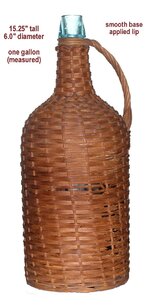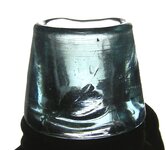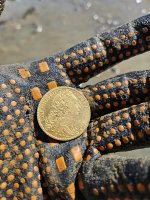RelicDude
Bronze Member
- Apr 20, 2012
- 1,486
- 1,648
- 🥇 Banner finds
- 1
- Detector(s) used
- Minelab E-trac
- Primary Interest:
- All Treasure Hunting
Yesterday I was trekking through the woods looking for cellar holes when I stumbled upon an old decrepit barn that's about to fall over. Not trusting the floor I decided to explore underneath that's when I found this huge bottle sitting in the mud. This thing has a huge applied lip and some beautiful whittle to it. But my question is. Is this Demi pontiled? Thanks for your help - Justin











